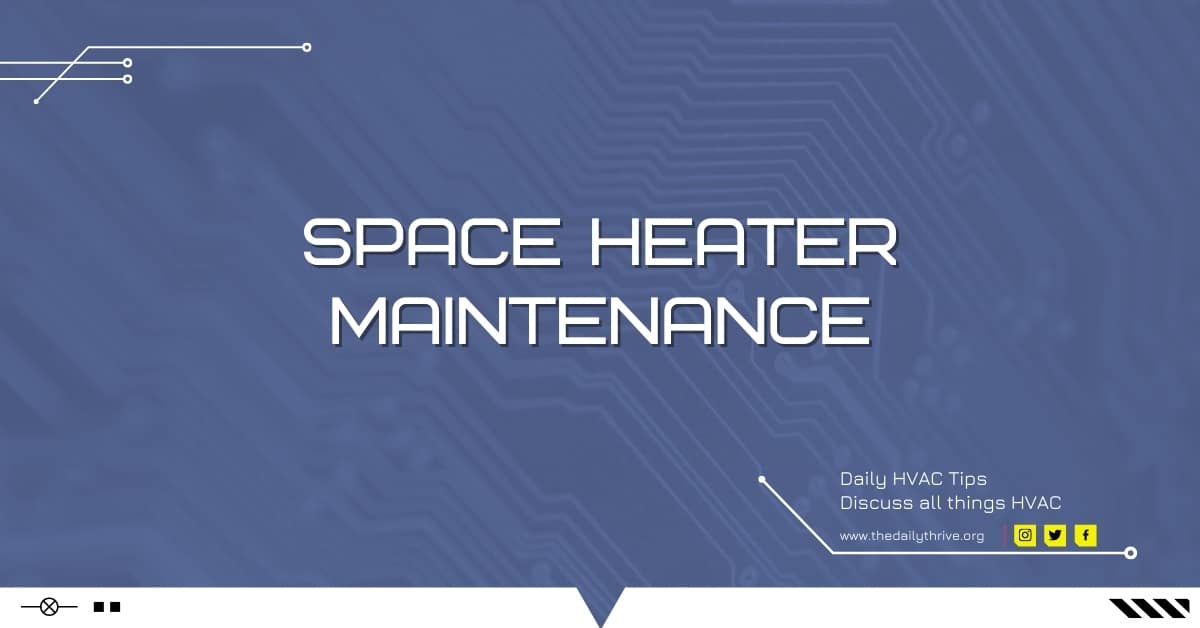Space heaters provide an inexpensive way of heating your home, but they can also present risks, mainly in the form of fire hazards. For that reason, it is essential to give proper maintenance to your heater.
Keep Your Space Heater Clean
Ensuring cleanliness does not only apply to storage periods. While the space heater is in use, it is wise to regularly check for obstructions to the airflow, such as plants, fabric or paper.
There are health reasons for cleaning your space heater as, by circulating warm air, electric heaters can spread allergens or bacteria if they are not clean. Use the vacuum cleaner and lint-free cloths for this. Obviously, do not use water, as this will damage the heater, but a damp cloth can be used on the outer areas.
How to Clean a Space Heater
Cleaning the space heater regularly will help to maintain its efficiency. Here are the step-by-step instructions for cleaning your space heater.
Always read and follow any guidelines provided by your space heater’s manufacturer before cleaning.
- Always unplug the cord before moving, servicing or cleaning.
- Never place the heater in or near water. Do not immerse the heater in water.
- Clean the heater only with a vacuum equipped with a brush attachment; the vacuum will remove the lint and dirt from the surface of the heater.
- Vacuum intake grills every two weeks; this will help to maintain the optimum heater performance.
- Use a toothbrush or other soft bristle brush to gently loosen any dirt not removed by the vacuum.
- Never attempt to take apart the heater.
- Clean the body of the heater with a soft cloth only. – never use alcohol or solvents such as gasoline, benzene, paint thinner, or other harsh cleaners.
Check the Storage Conditions
When storing portable electric heaters, try to put them back into the box in which they came when you bought them. Close up the box so that no dust, air or water vapour gets in and damages the heater.
When the winter arrives, and you need to use the heater again, ensure that you vacuum it thoroughly. Any dust or debris left on the insides could spark a fire once the heater is plugged in.
Also, before plugging your heater back in and after a period of storage, check the cord and the plug. There should not be any damage to these components. Minor scratches to the cord can be fixed by wrapping it in electrical or insulating tape, but anything more than a scratch is a potential fire hazard, and so the heater must be disposed of.
For wall-mounted heaters connected to the mains, you will also want to vacuum around any opening to pick up any dust or dead insects that may have worked their way in there.
How old is your heater?
With the passage of time, electric components can become damaged or dysfunctional, raising the risk of fire associated with electric space heaters. In addition, many of the older models do not have safety elements, such as automated turn-off features. These are important as they are designed to prevent overheating and, with it, potential danger.
It is also wise to pay attention to the general condition of the plug and the sockets to which the heather is connected. If they are loose in any way, have them replaced. It is better to be safe than sorry.
It may be worth spending a little more on a model with a smart digital regulator that will know when elements within the heater are broken and will shut down accordingly.
Routine Checks and Maintenance
As with any other electric heating system, electric space heaters must be routinely inspected to ensure they are safe to operate. If the heater is wall-mounted and goes months without use, then it is recommended to turn the heater on for short periods of time to make sure it is in good working order. If you want a more thorough inspection, this can be done by hiring the services of a domestic electrical testing company that can perform space heater maintenance on all your electrical goods.






